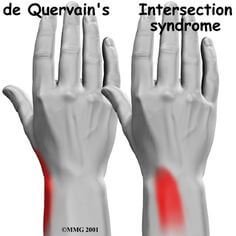Tendonitis
It is not uncommon for professional, or serious, regular pianists to experience various hand injuries over the course of their piano playing days. This is particularly problematic for people who may have small hands, and who play complex works, such as the Rachmaninov Concerto Number 3, and so on. However, this problem is certainly not confined to only classical pianists, or even professionals. These various injuries can affect just about any pianist, casual or professional, from time to time.
The most typical injuries include tendonitis, and wrist strain, mostly as a result of either not having sufficient strength built up in their fingers and hands, as well as other playing issues such as correct position at the piano. This is by no means an exhaustive list, but a common list of problems, as I have mentioned earlier.
For some piano players, the thought may even have crossed their mind to give up playing, due to the repetitive injuries. Whilst this is an extreme option, there are other ways to reduce the injuries, and actually end up by playing better. One method that has been proven by many students after being adopted is the Bowman method.
Professor Lionel Bowman was a distinguished piano player, at the peak of his career around his late thirties, who had developed very great problems with tendonitis. After having to actually stop playing for a number of months, while his hand healed, he took the time to actually study the anatomy of the hand and arm, and created his own method of playing the piano. His style has enabled him to become a better teacher, and his crowning achievement through this process was that he not only was able to resume his playing, but succeeded in helping others play better, with less incidence of injury as well.
The Bowman method encompasses the strengthening of the fingers, as well as an overall approach to muscle coordination. Far too many people start to play the piano a certain way, and find that, over the years, their discomfort increases, due to the method of playing that creates tension and stress in the joints as well as fingers.
One aspect of the method is about sitting in the right place, with reference to the notes being played. As an example, the hips need to be loose, in that for certain parts of the score, the pianist will need to sit right, or site left, and even sit back, to allow the wrists to become lower then the keys. By moving the hips, so the pianist’s body is in front of, and at right angles to the keyboard, will minimise the stress on the wrists as well as muscles of the wrist, and tendons.
It can often aid the pianist to make specific notes on the music score, like sitting right, or sitting left, as this will aid the pianist to achieve an optimum posture and comfort. This comfort will translate into relaxation, and thus, a better overall sound as well as reduced injuries.
This technique needs to be practiced, and actually, it can be beneficial to start learning a new piece, rather than trying to relearn an already known piece of music. The best proof is in the action, and seeing for yourself.


